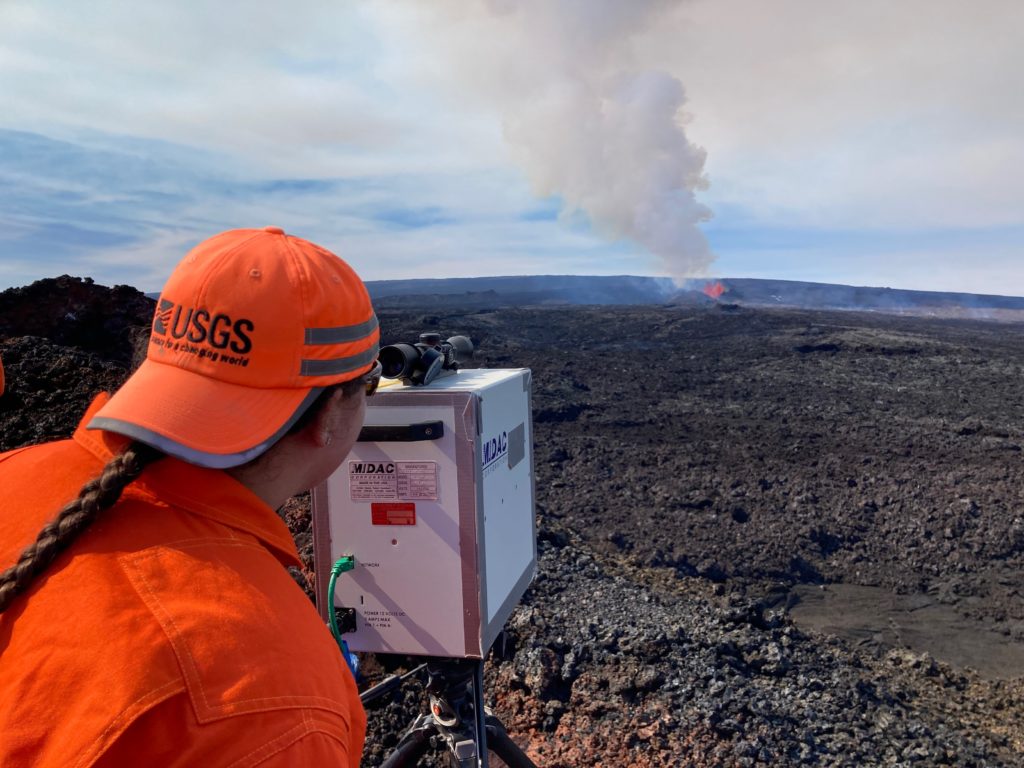
Tracking Mauna Loa’s eruption is more than studying lava flows and earthquakes; it’s also tracking the gas that rises from it’s erupting fissures. Scientists at the world’s largest active volcano in Hawaii have been studying not just what’s what on the ground, but what’s up in the air too with the eruption and the gas it emits. According to USGS, magma contains dissolved gases, which provide the driving force that causes most volcanic eruptions. As magma rises towards the surface and pressure decreases, gases are released from the liquid portion of the magma and continue to travel upward and are eventually released into the atmosphere. Large eruptions can release enormous amounts of gas in a short time.
High levels of volcanic gas, including sulfur dioxide (SO2) , are emitted from the fissure vents. As SO2 is released from the eruption, it will react in the atmosphere with oxygen, sunlight, moisture, and other gases and particles and within hours to days, convert to fine particles. The particles scatter sunlight and cause the visible haze, known as v, a form of volcanic air pollution or volcanic smog. Vog creates the potential for airborne health hazards to residents and visitors, damages agricultural crops and other plants, and affects livestock operations.
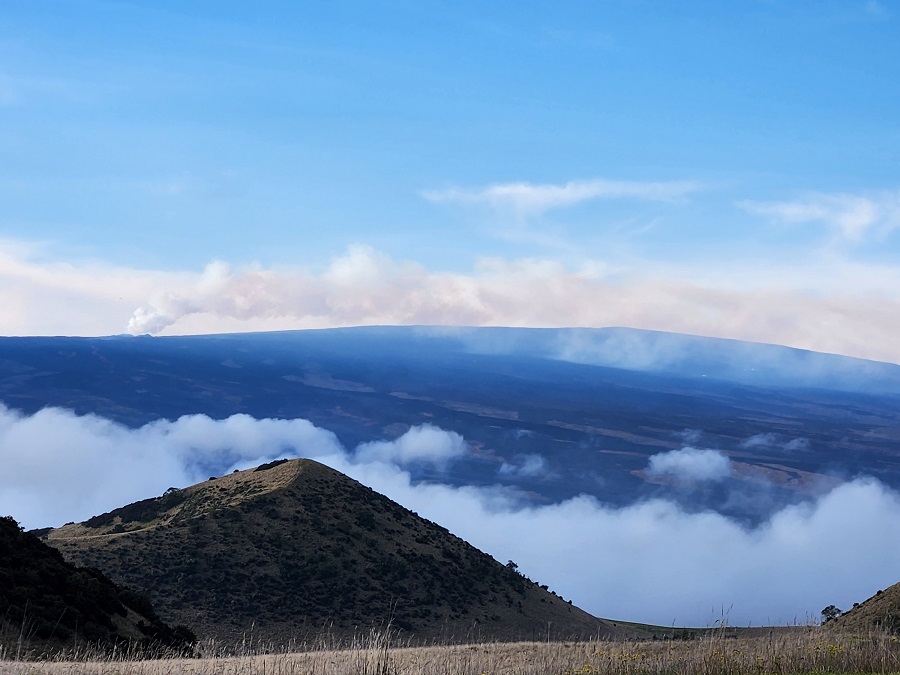
Because of the hazards that volcanic gas can create, USGS scientists are measuring the volcanic gas output and the types of gasses being emitted. According to USGS scientist Wendy Stovall, there are crews on the ground driving around the island and measuring sulfur dioxide in the plume as it rises from the eruption and is blown by wind. They are measure the gas through a Differential Optical Absorption Spectrometer or DOAS for short. This instrument peers into the plume to quantify the SO2. “SO2 is also being measured via satellites. Those views provide a broader perspective, but not quite the resolution that the ground-based measurements give us,” added USGS scientist Michael Poland.
According to USGS, by far the most abundant volcanic gas is water vapor, which is harmless. However, significant amounts of carbon dioxide, sulfur dioxide, hydrogen sulfide and hydrogen halides can also be emitted from volcanoes. Depending on their concentrations, these gases are all potentially hazardous to people, animals, agriculture, and property. Other gases released in volcanic eruptions include Carbon Dioxide (CO2), Hydrogen Sulfide (H2S ), and Hydrogen Halides (HF, HCl, HBr).
When CO2, a colorless, odorless gas, is emitted from volcanoes, it typically becomes diluted to low concentrations very quickly and is not life threatening. However, because cold carbon dioxide gas is heavier than air it can flow into in low-lying areas where it can reach much higher concentrations in certain, very stable atmospheric conditions. This can pose serious risks to people and animals. Breathing air with more than 3% CO2 can quickly lead to headaches, dizziness, increased heart rate and difficulty breathing. At mixing ratios exceeding about 15%, carbon dioxide quickly causes unconsciousness and death. Fortunately, CO2 hasn’t been an issue with the ongoing Mauna Loa eruption.
Hydrogen sulfide is a colorless, flammable gas with a strong, offensive odor. It is sometimes referred to as sewer gas. H2S becomes odorless and very toxic, causing irritation of the upper respiratory tract and, during long exposure, pulmonary edema. Exposure to 500 ppm can cause a human to fall unconscious in 5 minutes and die in an hour or less.
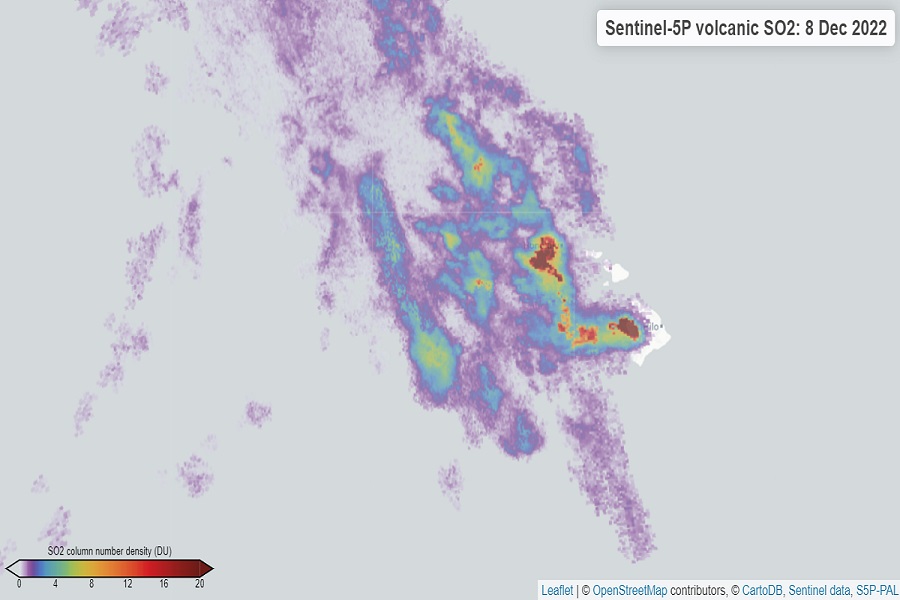
According to USGS, when magma ascends close to the surface, volcanoes can emit the halogens fluorine, chlorine and bromine in the form of hydrogen halides (HF, HCl and HBr). These species have high solubility; therefore they rapidly dissolve in water droplets within volcanic plumes or the atmosphere where they can potentially cause acid rain. In an ash-producing eruption, ash particles are also often coated with hydrogen halides. Once deposited, these coated ash particles can poison drinking water supplies, agricultural crops, and grazing land. As with carbon dioxide issues, hydrogen halides have not been a concern with Mauna Loa.
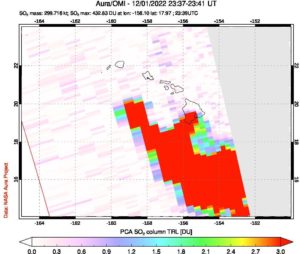
The biggest concern with Mauna Loa has been SO2. Sulfur dioxide is a colorless gas with a pungent odor that irritates skin and the tissues and mucous membranes of the eyes, nose, and throat. SO2 emissions can cause acid rain and air pollution downwind of a volcano. During very large eruptions, especially eruptions larger than the current Mauna Loa one, SO2 can be injected to altitudes of greater than 10km into the stratosphere. Here, SO2is converted to sulfate aerosols which reflect sunlight and therefore have a cooling effect on the Earth’s climate. They also have a role in ozone depletion, as many of the reactions that destroy ozone occur on the surface of such aerosols.
During the May 2018 eruption of Hawaii’s Kilauea Volcano’s Lower East Rift Zone, sulfur dioxide was covering the surface in a residential neighborhood from erupting fissures. During that eruption, a plume of sulfur dioxide was detected by the Ozone Mapper Profiler Suite (OMPS) on the Suomi-NPP satellite. During the height of that eruption during the spring and summer of 2018, authorities evacuated people from the danger sulfur dioxide posed. “Hawaii Fire Department reports extremely dangerous conditions due to high levels of Sulfur Dioxide gas in the evacuation area. Elderly, young, and people with compromised respiratory systems are especially vulnerable,” warned the Hawaii County Civil Defense in 2018. They added, “The high levels detected are an immediate threat to life for all who become exposed. First responders may not be able to come to the aid of residents who refuse to evacuate. ”
Thus far in the 2022 eruption of Mauna Loa, winds have been cooperating for residents and visitors on the Big Island of Hawaii. For now, steam and gas rising up from the volcano has been heading straight up high into the sky; from there, it has been captured by high-altitude winds that carry much of the volcanic emissions west. Since the eruption, air quality sensors around the island have reported little to no SO2 pollution. Somewhat heavier volcanic debris, such as Pele’s Hair, strands of volcanic glass, have drifted down to the surface of the Big Island. As weather conditions change in Hawaii, the presence of SO2 and volcanic haze or vog may also increase around not only the Big Island, but the rest of Hawaii too.
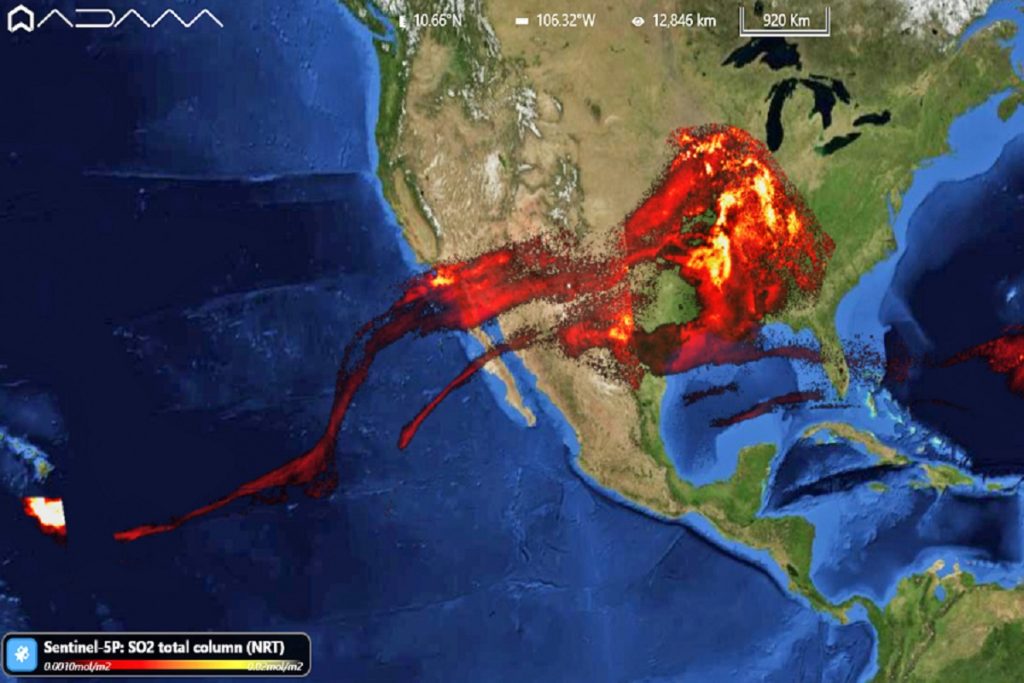
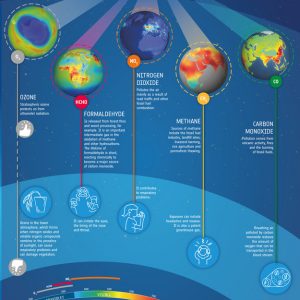
The ADAM Platform has been sharing images reflecting the volume of sulfur dioxide (SO2) leaving the Hawaiian volcano as it spreads over the eastern Pacific Ocean and western portions of central North America. Imagery captured on December 2 also shows a band of concentrated SO2 emissions spreading across the American Southwest, much of the Central Plains and Mississippi River Valley, and now moving into the U.S. East Coast. The ADAM Platform is using data from the Sentinel 5-Precursor satellite, also known as Sentinel 5P, which was launched into space by the European Space Agency (ESA) in October 2017. As part of the European Commission’s Copernicus program, the Sentinel 5P was the first in the series dedicated to monitoring the Earth’s atmosphere. Using the state-of-the-art Tropomi instrument, it is able to collect data on a variety of gases in the atmosphere such as nitrogen dioxide, ozone, formaldehyde, sulfur dioxide, methane, carbon monoxide, and various aerosols.
With the Mauna Loa eruption slowing a bit in the last 48 hours, not only is lava output reduced, but so is volcanic gas emissions. USGS says sulfur dioxide emission rates have dropped down to approximately 30,000 tonnes per day (t/d) as measured on December 8, 2022; when the eruption first started, it was closer to 200,000 tonnes per day.
A lot of the gas that left Mauna Loa headed for the U.S. mainland, with a concentrated cloud of SO2 drifting over the southeastern U.S. and Gulf of Mexico for many days. That cloud has since dissipated. With the eruption slowing down for now, much of the gas released doesn’t get much further than the Hawaiian Islands for now. And strong trade winds are keeping much of those fumes out of communities in the island chain.
Scientists will continue to keep an eye out on Mauna Loa as the Eruption of 2022 evolves; and they’ll continue to keep an eye on the air too for any gas released by the world’s largest active volcano.